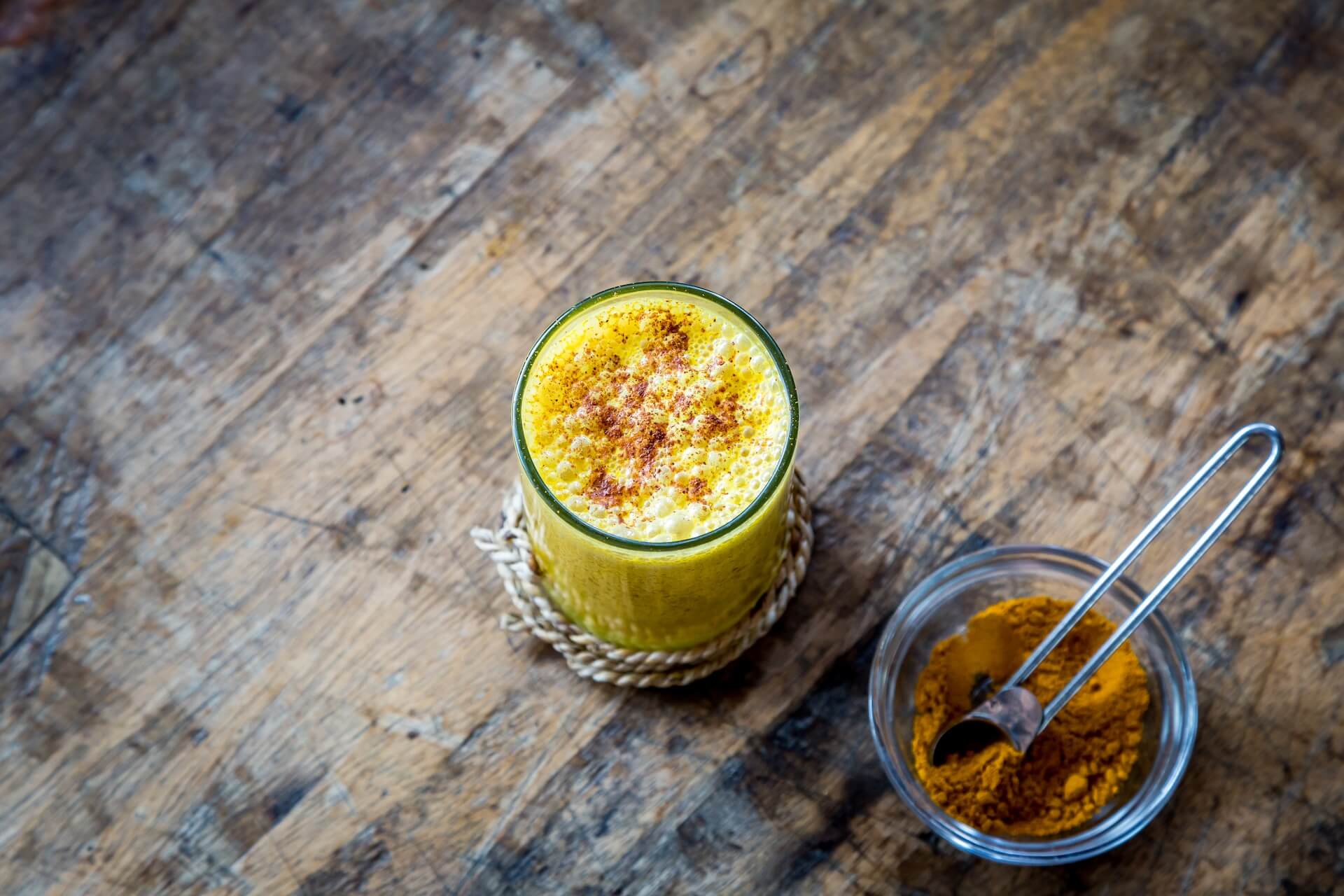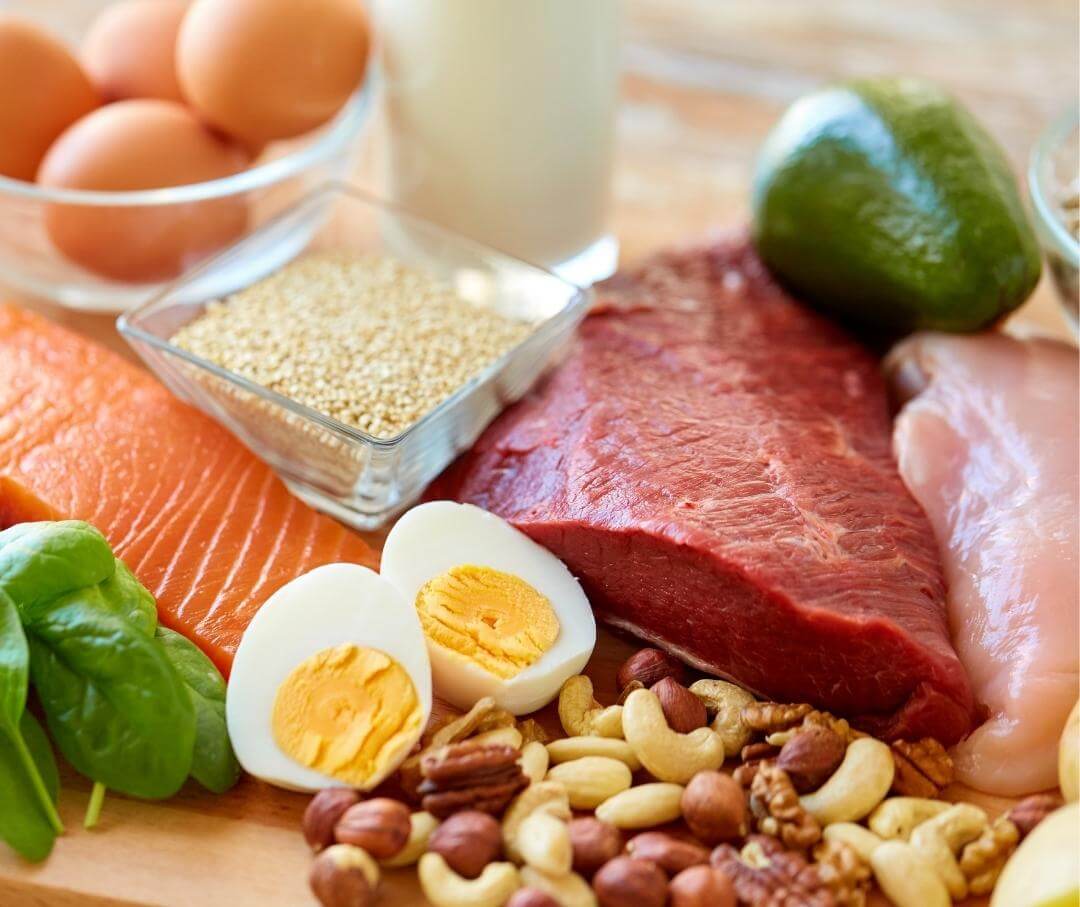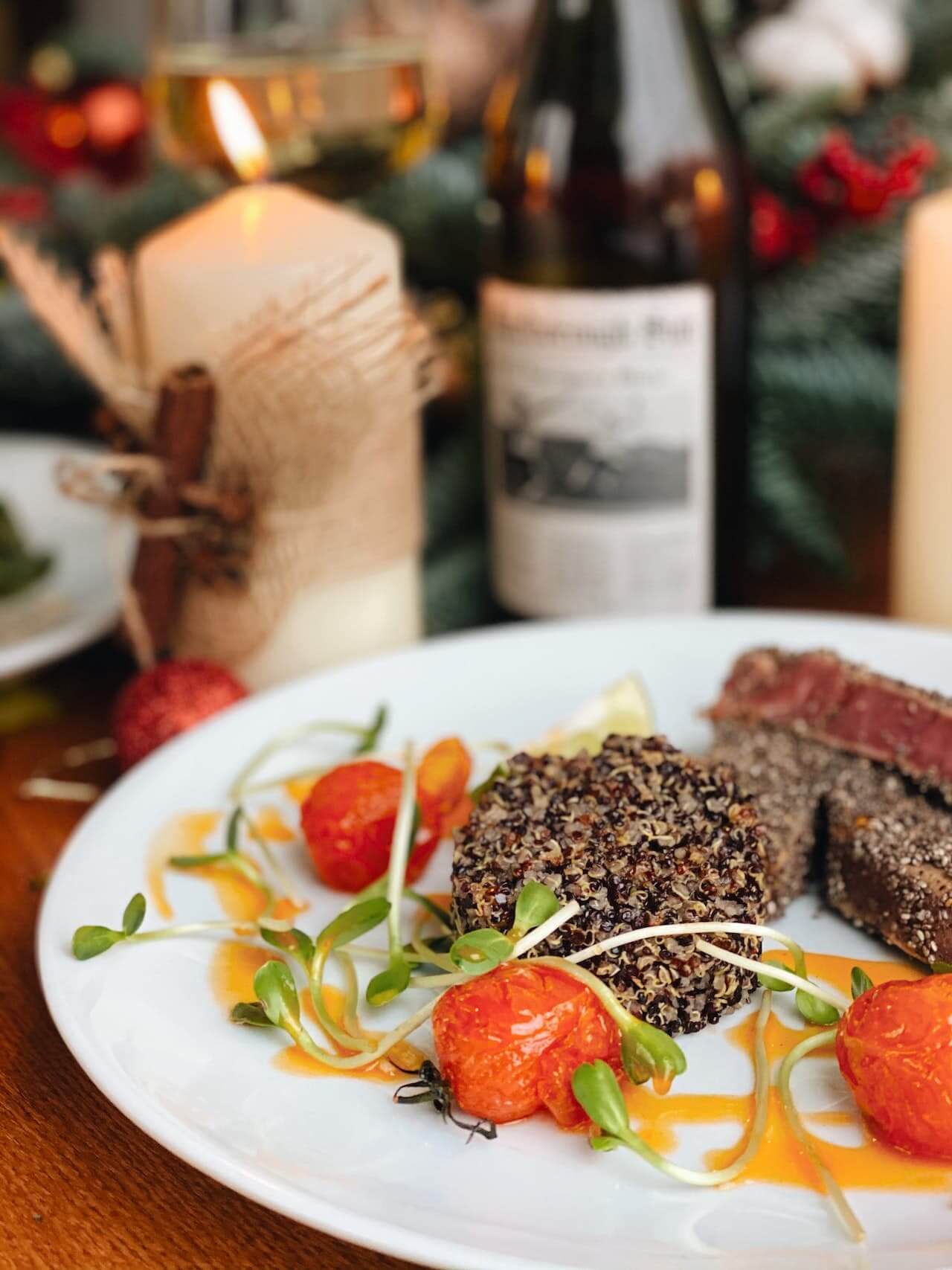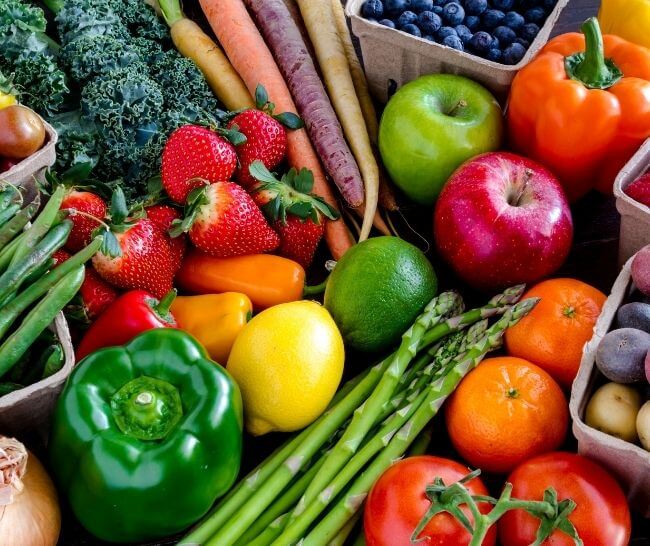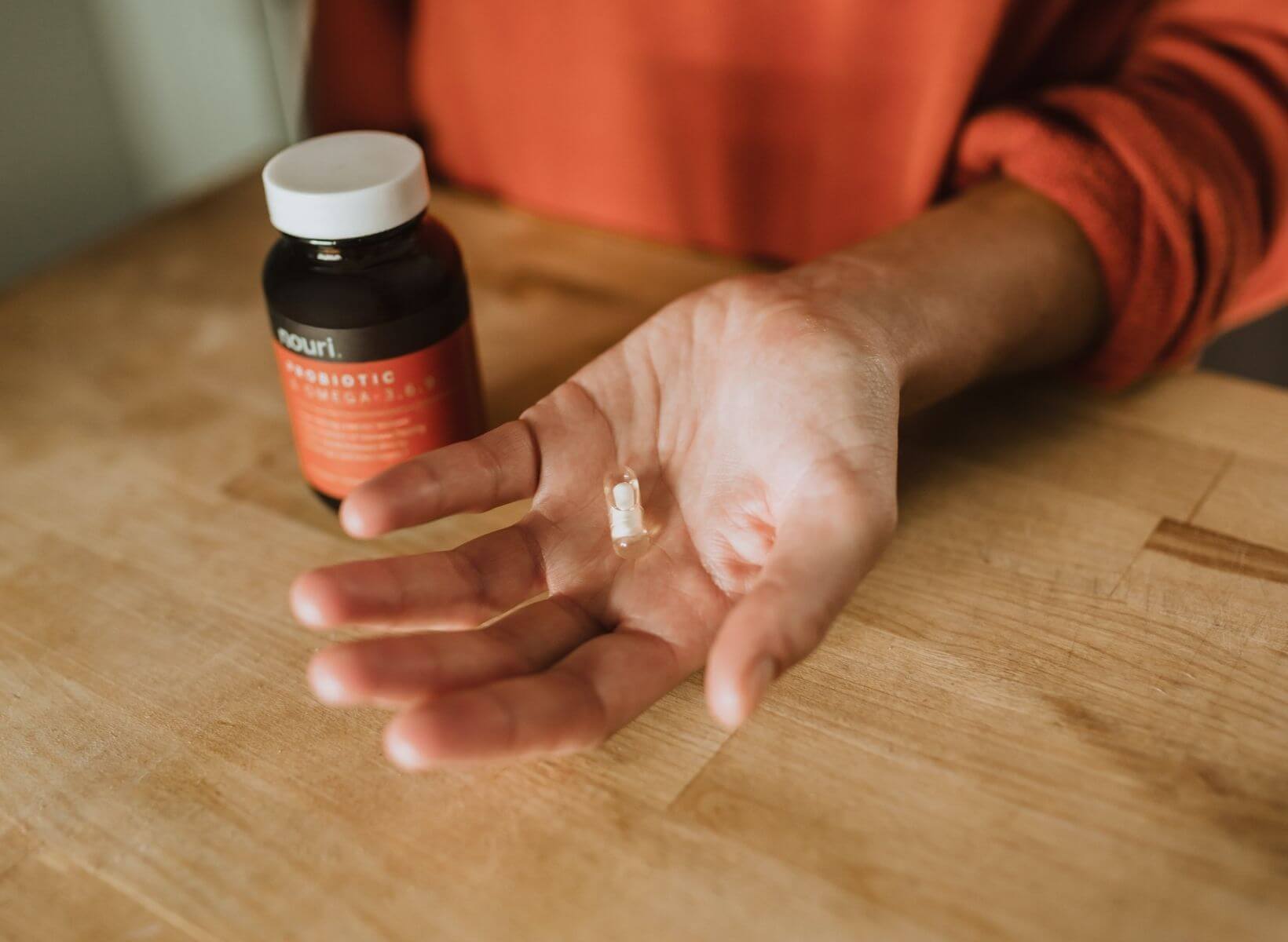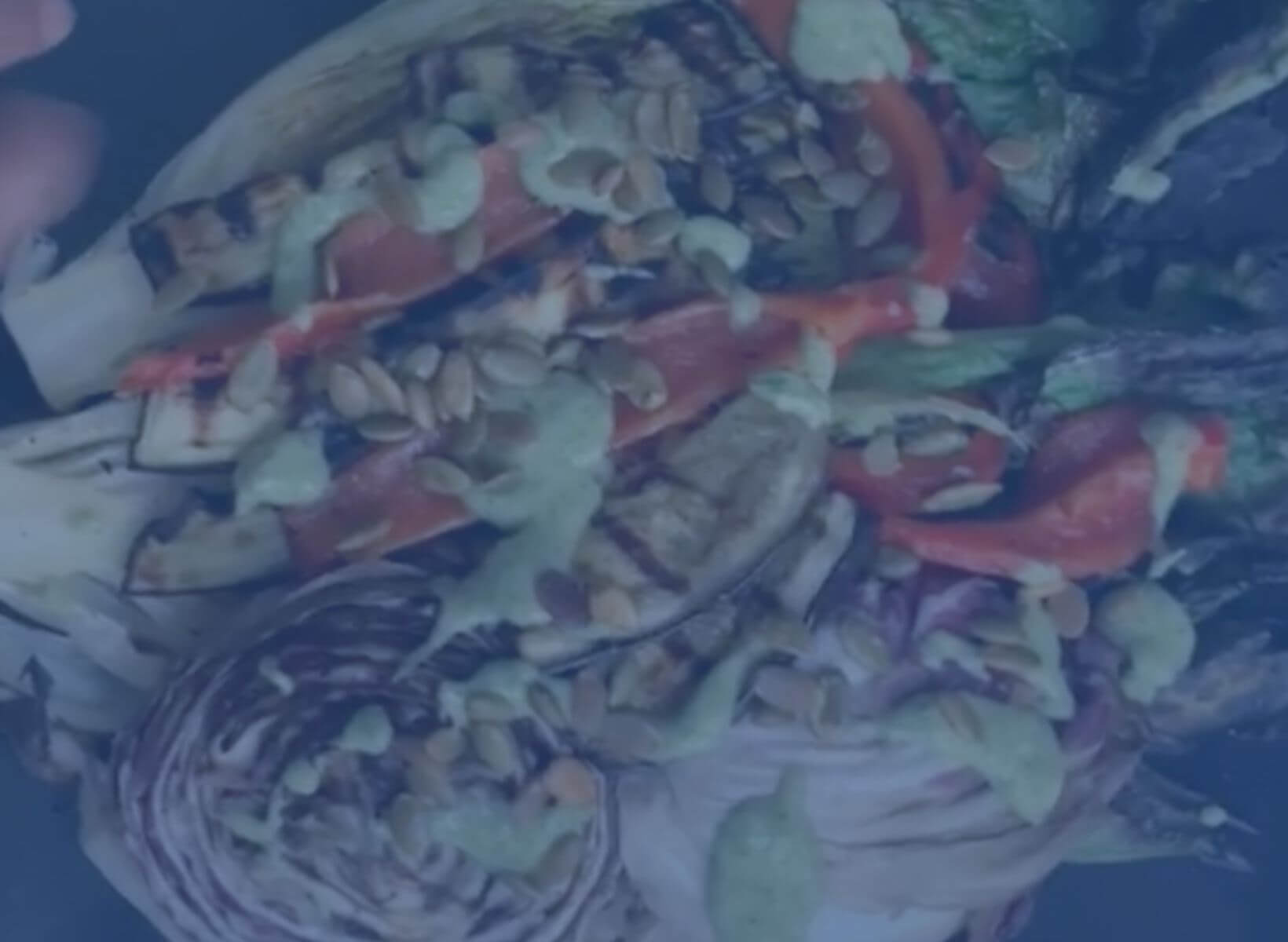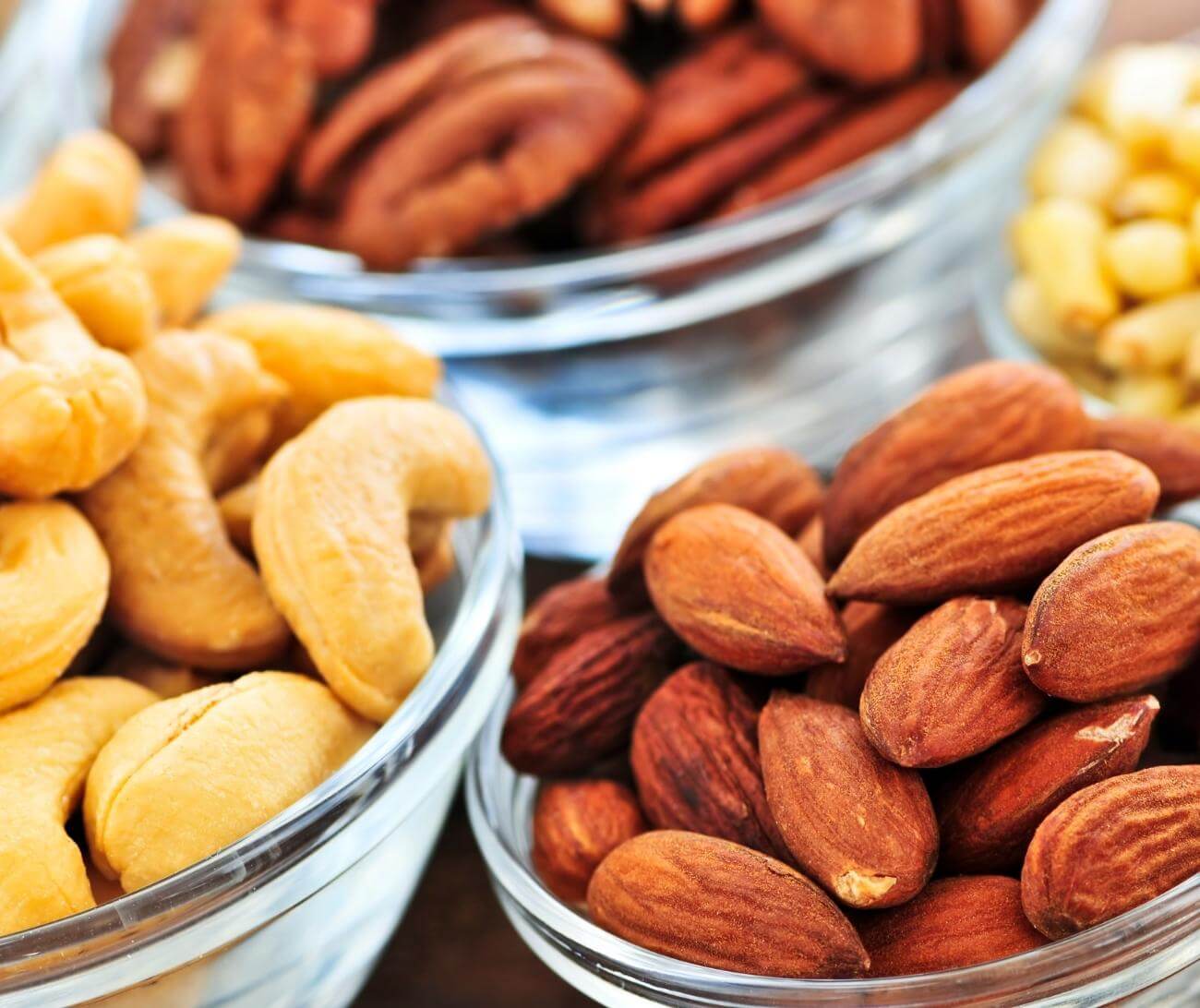Golden milk may seem like the next superfood fad destined to fade away as the next trend begins, but this healing elixir has been used for thousands of years, as a home and ayurvedic recipe, well before its newfound popularity today.
Turmeric, the star ingredient, is known for its powerful antioxidant and anti-inflammatory properties.¹ You don’t have to spend a fortune at your local coffee shop to enjoy the benefits of golden milk—all you need are a few simple ingredients.
This article will share golden milk benefits and why this traditional healing elixir deserves a spot in your regular health routine.
What is Golden Milk
Golden milk, or Haldi Doodh (meaning “turmeric milk” in Hindu), is a health-supportive beverage used for thousands of years in India. Traditionally made with only milk, turmeric, and sweetener, variations often include herbs like ginger, cinnamon, black pepper, and cardamom. Plant-based options like almond or coconut milk are also used today as a dairy-free alternative.
Turmeric is a staple spice in traditional Indian food preparation, providing a vibrant yellow color to dishes. The spices in golden milk also explain its anti-inflammatory and health-supportive benefits.²
<p class="pro-tip"><strong>Learn more: </strong> <a href="/blog/is-chocolate-milk-good-for-you">Chocolate Milk: Is It Good for You? 4 Benefits & Potential Downsides</a>.</p>
Golden Milk Nutritional Facts
Golden milk nutrition facts vary slightly depending on the ingredients used. Assuming milk is used without a sweetener, the nutrients primarily come from the milk itself. For example, one cup of 2% cow milk has the following nutritional breakdown:³
- Calories: 122
- Protein: 8g
- Fat: 5g
- Carbohydrates: 12g
- Calcium: 309mg
- Magnesium: 29mg
- Potassium: 390mg
Of course, these number change depending on the type of milk (almond milk, for example, will bring down the calories, protein, and fat content) and any other ingredients added.
7 Surprising Health Benefits of Golden Milk
The health benefits of golden milk are mainly attributed to the spices it contains. Keep in mind that many of the studies listed below examine the effects of taking these spices in supplement form, so the dose is likely to be much higher than you would get from drinking the beverage.
Still, golden milk can contribute to your total intake of these beneficial compounds. Here are 7 of the most impressive health benefits of drinking golden milk:
1. Anti-Inflammatory Properties
Curcumin, one of the primary active compounds in turmeric, is known for its anti-inflammatory properties. It works by blocking the signaling molecules that upregulate inflammation in the body. 1
As a result, studies on curcumin and turmeric benefits show promise for inflammatory conditions like arthritis or inflammatory bowel disease.1 Some research even suggests that curcumin is as effective (or even more) than certain medications used to reduce pain for people with arthritis.⁴
Adding ginger and cinnamon to your golden milk only increases the inflammation-reducing benefits.⁵ Studies suggest that ginger also helps with joint pain related to inflammation by also blocking inflammatory pathways.⁶
2. Antioxidant Protection
The spices in golden milk also provide antioxidant protection in the body. Oxidative stress, caused by an imbalance of free radicals, can damage cells and tissues and increase the risk of chronic disease.⁷ Antioxidants like curcumin help clear free radicals and improve oxidative stress markers.⁸
Curcumin may also increase the activity of essential antioxidants in the body and turn off enzymes that produce free radicals in your body. 1 Cinnamon and ginger also are linked to antioxidant activity. Studies suggest that cinnamon has antioxidant properties that can scavenge free radicals, and ginger also may increase antioxidant levels in the body to protect against oxidative stress.⁹ ¹⁰
3. Brain Function
Curcumin may support brain function through its anti-inflammatory and antioxidant activity. Inflammation, cellular damage, and oxidative stress are all linked to dementia, Alzheimer’s, and age-related cognitive decline.¹¹ Curcumin may provide neuroprotective benefits, preserving brain and nervous system cells.¹²
The turmeric in golden milk may also support cognitive function by increasing brain-derived neurotrophic factor (BDNF). BDNF helps protect neurons and support their growth and plasticity, influencing memory, learning, and higher cognitive functions.¹³
Research suggests that curcumin increases BDNF levels which could help protect neurons from damage while also supporting the growth of new neurons.¹⁴ Studies also suggest that supplementing with curcumin could help with attention, memory, and overall mood in otherwise healthy people.¹⁵
Ginger also may be neuroprotective, with studies suggesting it supports memory and cognitive function, primarily due to anti-inflammatory and antioxidant effects.¹⁶

4. Mood Support
Curcumin may also support your mood, according to some research. Mental health support is multi-faceted, so we can’t say curcumin alone should be used to support mood conditions, but it could help. Research suggests depression and inflammation are related, so curcumin could play a role in reducing symptoms (although more research is needed).¹⁷ ¹⁸
5. Heart Health
Inflammation and oxidative stress also have ties to heart disease and cardiovascular conditions. Research suggests that curcumin may help support your heart and blood vessels by influencing the expression of genes and enzyme activity that affect the production of triglycerides and cholesterol. 1
One study found that people with metabolic syndrome (a condition characterized by abdominal obesity and elevated blood pressure, blood sugar, cholesterol, and triglycerides) who supplemented with curcumin for eight weeks had lower inflammatory markers, lipids, and better blood sugar control.¹⁹
Cinnamon also has heart health benefits and may support healthy cholesterol levels (including raising good cholesterol).²⁰ Ginger may also help lower blood pressure and cholesterol levels while lowering inflammation.²¹ ²²
6. Supports Healthy Blood Sugar Levels
As mentioned earlier, the immediate effect of golden milk on your blood sugar depends on any added sweeteners. Adding sugar, maple syrup, and honey can all cause blood sugar spikes. Minimizing sweeteners can mitigate this effect, plus curcumin, ginger, and cinnamon are also linked to healthier blood sugar levels.
Cinnamon can significantly lower fasting blood sugar and improve insulin sensitivity.²³ Insulin is the hormone that regulates blood sugar. The more sensitive your cells are to its signal, the better your blood sugar control. On the other hand, insulin resistance means your cells are less responsive, so blood sugar stays higher than it should.
According to a meta-analysis, ginger has similar blood sugar benefits. Research suggests it could lower fasting blood sugar and improve insulin resistance and HbA1c (a three-month average blood sugar measurement) for people living with type 2 diabetes.²⁴
Curcumin also may improve insulin resistance and support better blood sugar control. It also can help with other risk factors associated with blood sugar dysregulation and type 2 diabetes, like inflammation and high blood lipids.²⁵
{{mid-cta}}
7. Digestive Benefits
Sipping golden milk may help with indigestion. Ginger is a digestive-supporting spice known to reduce nausea, bloating, and other digestive issues. Studies suggest that it optimizes digestion by increasing gut motility (how fast food moves through the digestive tract) and speeds up gastric emptying.²⁶
Turmeric and curcumin are also tied to digestive health. Research suggests that it could help with inflammation in the digestive tract, benefiting both healthy people and those with digestive health conditions. Lower inflammation in the gut could help support a balanced gut bacteria, better digestion, and improved nutrient absorption.²⁷
Potential Downsides of Golden Milk
Golden milk has a few downsides, especially if you make it yourself without added sweeteners. You could notice minor side effects like indigestion if you are sensitive to spices, but this depends on each person’s response.
If you take medications, check with your doctor first since high amounts of turmeric may interact with certain prescription drugs like blood thinners.
Golden Milk Recipe: How to Make It at Home
You can purchase golden milk powder pre-blended with spices, but making it at home is easy and cost-effective. Here’s what you need:
Golden Milk Ingredients
- 2 cups of milk (dairy or non-dairy of choice)
- 1 teaspoon ground turmeric
- ½ teaspoon ground or grated fresh ginger
- ½ teaspoon ground cinnamon
- Pinch of black pepper
- Optional sweetener of choice (monk fruit makes a great sugar-free option)
Black pepper increases the absorption of curcumin, so adding a pinch is always recommended.²⁸ Fat also helps with absorption (curcumin is fat soluble), so you’ll usually see turmeric or curcumin supplements combined with a carrier oil—something to keep in mind if you make your golden milk at home.
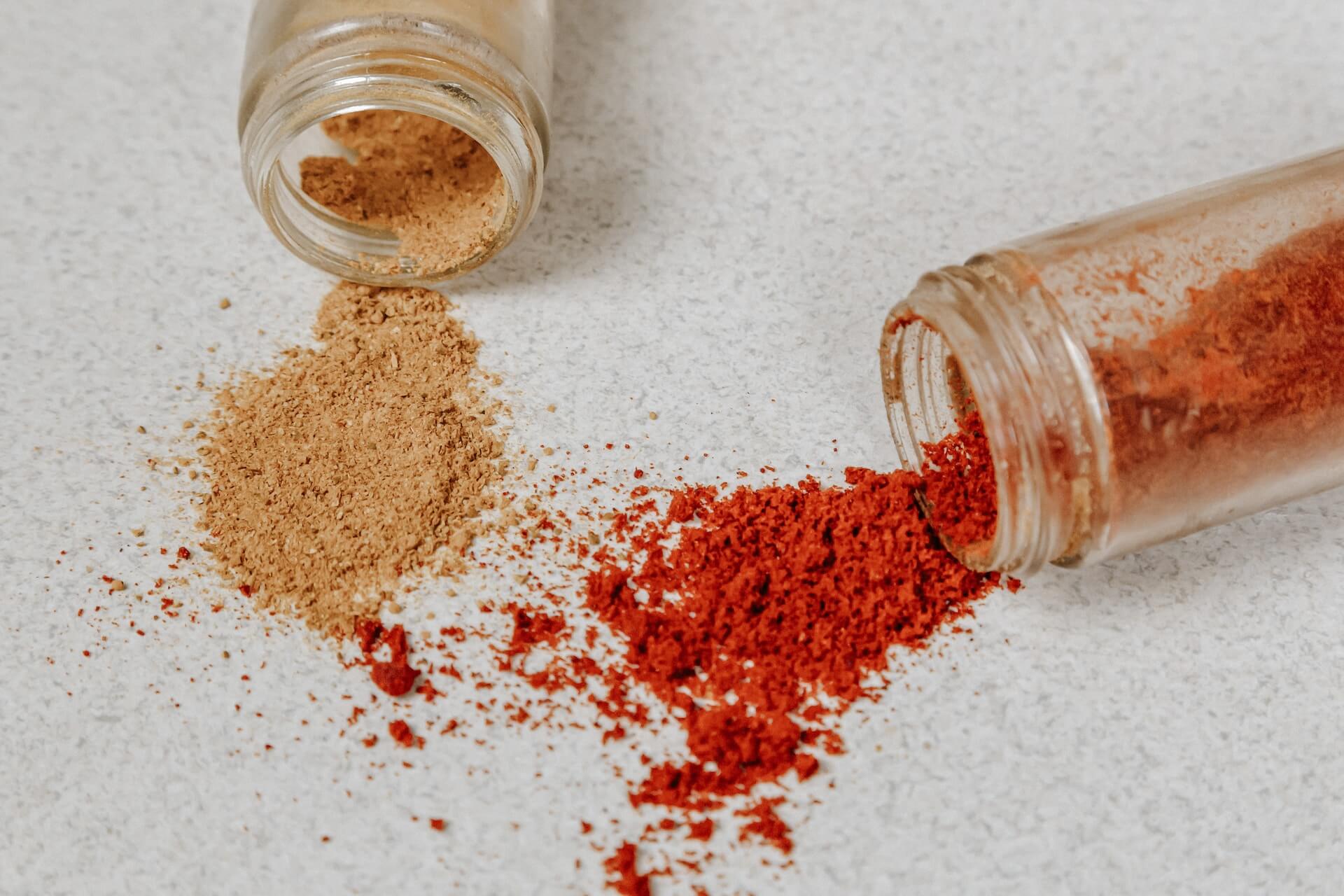
How to Prepare Golden Milk At Home
- Heat milk in a saucepan on medium heat until it simmers.
- Add turmeric, ginger, cinnamon, and black pepper and stir.
- Simmer for 10 minutes on low heat (without boiling).
- Strain the mixture using a cheesecloth or fine mesh strainer.
- Add sweetener, if desired, and enjoy!
Fun hint: If you have a milk frother, try frothing at the end for a foamy, turmeric latte.
FAQs About Golden Milk
What is the Best Time to Drink Golden Milk?
There’s no one best time to drink golden milk. Some people prefer starting their day with it, while others find golden milk comforting to drink in the evening as part of a wind-down ritual. Ultimately, the best time to drink golden milk is whenever it fits into your lifestyle and routine.
How Does Turmeric Help With Inflammation?
As mentioned above, turmeric contains curcumin, an active compound that is a powerful antioxidant and anti-inflammatory. Consuming turmeric for inflammation or supplements with curcumin could help reduce immune system proteins that increase the inflammatory response and contribute to chronic illnesses. 1
Is it Safe to Drink Golden Milk Every Day?
Golden milk is safe to enjoy every day. Unless you have a food sensitivity or medical condition that requires you to monitor your intake of turmeric, there’s no reason you can’t enjoy it every day.
How Does Golden Milk Help With Pain?
Inflammation in the body is the primary cause of pain in conditions like arthritis. Turmeric, found in golden milk, reduces inflammation by interrupting immune signaling molecules, which could help ease joint and muscle pain.1 Ginger and cinnamon also have anti-inflammatory and antioxidant activities that could help with pain management.5 ²⁹
<p class="pro-tip"><strong>Keep reading: </strong> <a href="/blog/healthy-milk">What Are the Best Healthy Milks For Weight Loss?</a>.</p>
Learn More About Healthy Nutrition with Signos Expert Advice
Yummy but health-supportive foods like golden milk can make adopting and following a healthy lifestyle much easier. Taking care of yourself is not about deprivation or strict diets. The most important step is finding what works for you because that means you’ll stick with it and feel more motivated to continue with positive changes.
Signos helps you make informed, personalized decisions about your diet and lifestyle to keep you motivated. Using a continuous glucose monitor paired with real-time feedback from the app provides ongoing guidance along your health journey.
Learn more about nutrition and metabolic health on SIgnos’ blog, and find out if Signos is a good fit for your health goals by taking a quick quiz here.
- Item 1
- Item 2
- item 3
Topics discussed in this article:
References
¹ Hewlings, S. J., & Kalman, D. S. (2017). Curcumin: A Review of Its Effects on Human Health. Foods (Basel, Switzerland), 6(10), 92. https://doi.org/10.3390/foods6100092
² Hatcher, H., Planalp, R., Cho, J., Torti, F. M., & Torti, S. V. (2008). Curcumin: from ancient medicine to current clinical trials. Cellular and molecular life sciences : CMLS, 65(11), 1631–1652. https://doi.org/10.1007/s00018-008-7452-4
³ USDA FoodData Central. (n.d.). Milk, reduced fat. Retrieved April 5th,2023 from https://fdc.nal.usda.gov/fdc-app.html#/food-details/746778/nutrients.
⁴ Chandran, B., & Goel, A. (2012). A randomized, pilot study to assess the efficacy and safety of curcumin in patients with active rheumatoid arthritis. Phytotherapy research : PTR, 26(11), 1719–1725. https://doi.org/10.1002/ptr.4639
⁵ Shen, Y., Jia, L. N., Honma, N., Hosono, T., Ariga, T., & Seki, T. (2012). Beneficial effects of cinnamon on the metabolic syndrome, inflammation, and pain, and mechanisms underlying these effects - a review. Journal of traditional and complementary medicine, 2(1), 27–32. https://doi.org/10.1016/s2225-4110(16)30067-0
⁶ Ballester, P., Cerdá, B., Arcusa, R., Marhuenda, J., Yamedjeu, K., & Zafrilla, P. (2022). Effect of Ginger on Inflammatory Diseases. Molecules (Basel, Switzerland), 27(21), 7223. https://doi.org/10.3390/molecules27217223
⁷ Tabrizi, R., Vakili, S., Akbari, M., Mirhosseini, N., Lankarani, K. B., Rahimi, M., Mobini, M., Jafarnejad, S., Vahedpoor, Z., & Asemi, Z. (2019). The effects of curcumin-containing supplements on biomarkers of inflammation and oxidative stress: A systematic review and meta-analysis of randomized controlled trials. Phytotherapy research : PTR, 33(2), 253–262. https://doi.org/10.1002/ptr.6226
⁸ Pham-Huy, L. A., He, H., & Pham-Huy, C. (2008). Free radicals, antioxidants in disease and health. International journal of biomedical science : IJBS, 4(2), 89–96.
⁹ Shang, C., Lin, H., Fang, X., Wang, Y., Jiang, Z., Qu, Y., Xiang, M., Shen, Z., Xin, L., Lu, Y., Gao, J., & Cui, X. (2021). Beneficial effects of cinnamon and its extracts in the management of cardiovascular diseases and diabetes. Food & function, 12(24), 12194–12220. https://doi.org/10.1039/d1fo01935j
¹⁰ Mao, Q. Q., Xu, X. Y., Cao, S. Y., Gan, R. Y., Corke, H., Beta, T., & Li, H. B. (2019). Bioactive Compounds and Bioactivities of Ginger (Zingiber officinale Roscoe). Foods (Basel, Switzerland), 8(6), 185. https://doi.org/10.3390/foods8060185
¹¹ Sartori, A. C., Vance, D. E., Slater, L. Z., & Crowe, M. (2012). The impact of inflammation on cognitive function in older adults: implications for healthcare practice and research. The Journal of neuroscience nursing : journal of the American Association of Neuroscience Nurses, 44(4), 206–217. https://doi.org/10.1097/JNN.0b013e3182527690
¹² Nebrisi E. E. (2021). Neuroprotective Activities of Curcumin in Parkinson's Disease: A Review of the Literature. International journal of molecular sciences, 22(20), 11248. https://doi.org/10.3390/ijms222011248
¹³ Bathina, S., & Das, U. N. (2015). Brain-derived neurotrophic factor and its clinical implications. Archives of medical science : AMS, 11(6), 1164–1178. https://doi.org/10.5114/aoms.2015.56342
¹⁴ Sarraf, P., Parohan, M., Javanbakht, M. H., Ranji-Burachaloo, S., & Djalali, M. (2019). Short-term curcumin supplementation enhances serum brain-derived neurotrophic factor in adult men and women: a systematic review and dose-response meta-analysis of randomized controlled trials. Nutrition research (New York, N.Y.), 69, 1–8. https://doi.org/10.1016/j.nutres.2019.05.001
¹⁵ Cox, K. H., Pipingas, A., & Scholey, A. B. (2015). Investigation of the effects of solid lipid curcumin on cognition and mood in a healthy older population. Journal of psychopharmacology (Oxford, England), 29(5), 642–651. https://doi.org/10.1177/0269881114552744
¹⁶ Ozkur, M., Benlier, N., Takan, I., Vasileiou, C., Georgakilas, A. G., Pavlopoulou, A., Cetin, Z., & Saygili, E. I. (2022). Ginger for Healthy Ageing: A Systematic Review on Current Evidence of Its Antioxidant, Anti-Inflammatory, and Anticancer Properties. Oxidative medicine and cellular longevity, 2022, 4748447. https://doi.org/10.1155/2022/4748447
¹⁷ Ramaholimihaso, T., Bouazzaoui, F., & Kaladjian, A. (2020). Curcumin in Depression: Potential Mechanisms of Action and Current Evidence-A Narrative Review. Frontiers in psychiatry, 11, 572533. https://doi.org/10.3389/fpsyt.2020.572533
¹⁸ Lamanna-Rama, N., Romero-Miguel, D., Desco, M., & Soto-Montenegro, M. L. (2022). An Update on the Exploratory Use of Curcumin in Neuropsychiatric Disorders. Antioxidants (Basel, Switzerland), 11(2), 353. https://doi.org/10.3390/antiox11020353
¹⁹ Kuptniratsaikul, V., Dajpratham, P., Taechaarpornkul, W., Buntragulpoontawee, M., Lukkanapichonchut, P., Chootip, C., Saengsuwan, J., Tantayakom, K., & Laongpech, S. (2014). Efficacy and safety of Curcuma domestica extracts compared with ibuprofen in patients with knee osteoarthritis: a multicenter study. Clinical interventions in aging, 9, 451–458. https://doi.org/10.2147/CIA.S58535
²⁰ Allen, R. W., Schwartzman, E., Baker, W. L., Coleman, C. I., & Phung, O. J. (2013). Cinnamon use in type 2 diabetes: an updated systematic review and meta-analysis. Annals of family medicine, 11(5), 452–459. https://doi.org/10.1370/afm.1517
²¹ Khandouzi, N., Shidfar, F., Rajab, A., Rahideh, T., Hosseini, P., & Mir Taheri, M. (2015). The effects of ginger on fasting blood sugar, hemoglobin a1c, apolipoprotein B, apolipoprotein a-I and malondialdehyde in type 2 diabetic patients. Iranian journal of pharmaceutical research : IJPR, 14(1), 131–140.
²² Ozkur, M., Benlier, N., Takan, I., Vasileiou, C., Georgakilas, A. G., Pavlopoulou, A., Cetin, Z., & Saygili, E. I. (2022). Ginger for Healthy Ageing: A Systematic Review on Current Evidence of Its Antioxidant, Anti-Inflammatory, and Anticancer Properties. Oxidative medicine and cellular longevity, 2022, 4748447. https://doi.org/10.1155/2022/4748447
²³ Qin, B., Panickar, K. S., & Anderson, R. A. (2010). Cinnamon: potential role in the prevention of insulin resistance, metabolic syndrome, and type 2 diabetes. Journal of diabetes science and technology, 4(3), 685–693. https://doi.org/10.1177/193229681000400324
²⁴ Zhu, J., Chen, H., Song, Z., Wang, X., & Sun, Z. (2018). Effects of Ginger (Zingiber officinale Roscoe) on Type 2 Diabetes Mellitus and Components of the Metabolic Syndrome: A Systematic Review and Meta-Analysis of Randomized Controlled Trials. Evidence-based complementary and alternative medicine : eCAM, 2018, 5692962. https://doi.org/10.1155/2018/5692962
²⁵ Marton, L. T., Pescinini-E-Salzedas, L. M., Camargo, M. E. C., Barbalho, S. M., Haber, J. F. D. S., Sinatora, R. V., Detregiachi, C. R. P., Girio, R. J. S., Buchaim, D. V., & Cincotto Dos Santos Bueno, P. (2021). The Effects of Curcumin on Diabetes Mellitus: A Systematic Review. Frontiers in endocrinology, 12, 669448. https://doi.org/10.3389/fendo.2021.669448
²⁶ Lete, I., & Allué, J. (2016). The Effectiveness of Ginger in the Prevention of Nausea and Vomiting during Pregnancy and Chemotherapy. Integrative medicine insights, 11, 11–17. https://doi.org/10.4137/IMI.S36273
²⁷ Dulbecco, P., & Savarino, V. (2013). Therapeutic potential of curcumin in digestive diseases. World journal of gastroenterology, 19(48), 9256–9270. https://doi.org/10.3748/wjg.v19.i48.9256
²⁸ Shoba, G., Joy, D., Joseph, T., Majeed, M., Rajendran, R., & Srinivas, P. S. (1998). Influence of piperine on the pharmacokinetics of curcumin in animals and human volunteers. Planta medica, 64(4), 353–356. https://doi.org/10.1055/s-2006-957450
²⁹ Rondanelli, M., Fossari, F., Vecchio, V., Gasparri, C., Peroni, G., Spadaccini, D., Riva, A., Petrangolini, G., Iannello, G., Nichetti, M., Infantino, V., & Perna, S. (2020). Clinical trials on pain lowering effect of ginger: A narrative review. Phytotherapy research : PTR, 34(11), 2843–2856. https://doi.org/10.1002/ptr.6730

